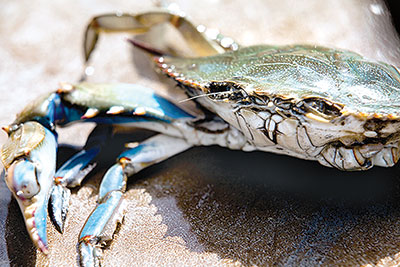
by Jeremy Cox –
The new winter dredge survey conducted by the Maryland Department of Natural Resources and Virginia Institute of Marine Science and released May 19 found an estimated 227 million crabs in the bay. The previous low was 270 million crabs in 2004.
Year-to-year population fluctuations, even dramatic ones, are common for the species.
Fishery managers say the plunge wouldn’t be so concerning except that it has been accompanied by a three-year streak of below-average reproduction. And they aren’t sure what’s behind the decline.
Meanwhile, one of the bay’s leading advocacy groups described the survey results as worrying and called on regulators to take immediate actions to protect crabs, especially adult females.
The overall adult population had been buoyed by a strong 2019 juvenile recruitment class. But now that their three-year life cycle is almost certainly over, only smaller classes remain.
To be successful, scientists say, blue crabs rely on a several overlapping dynamics: plenty of underwater grasses to live in; the right ocean currents to nudge larvae back into the bay; enough clams and oysters to feed on; and a little luck with avoiding predators, most notably the invasive blue catfish.
One factor is generally well accepted: broad swaths of underwater grasses have been lost as wet weather is flushing more nutrients and sediment into the estuary.
“But that’s not the only thing driving [the lower crab numbers],” said Adam Kenyon…
There's more to this story...
Are you a subscriber? Log in
Many more news articles, photos and ads are available only to those who subscribe to our printed newspaper or our online e-Edition.
Pick up a copy or Subscribe today!
| e-Edition | Printed version |
For assistance, call 804-758-2328.
(Jeremy Cox is a Bay Journal staff writer based in Maryland. You can reach him at jcox@bayjournal.com. This article first appeared on May 19, 2022, on BayJournal.com and was distributed by the Bay Journal News Service.)



